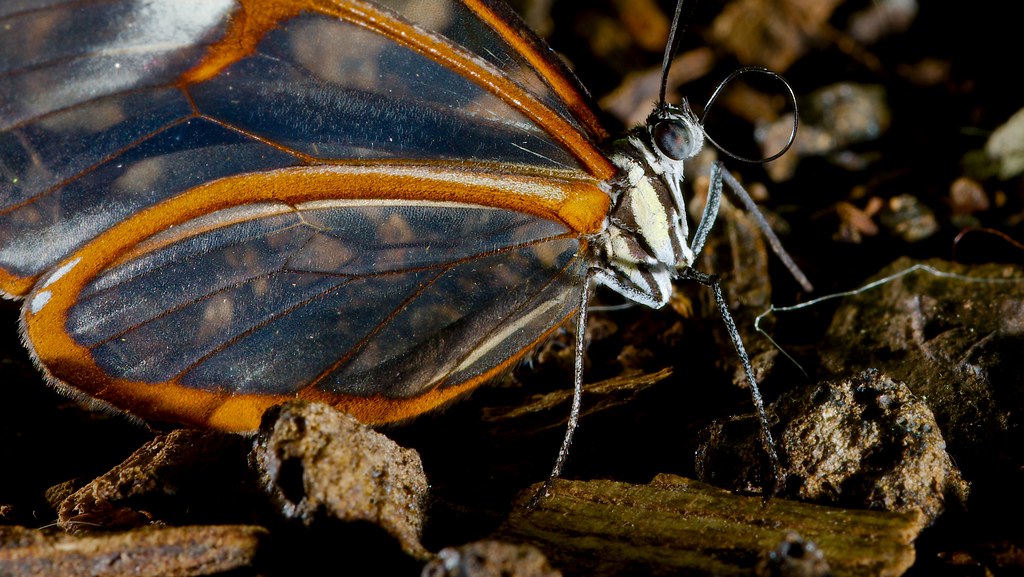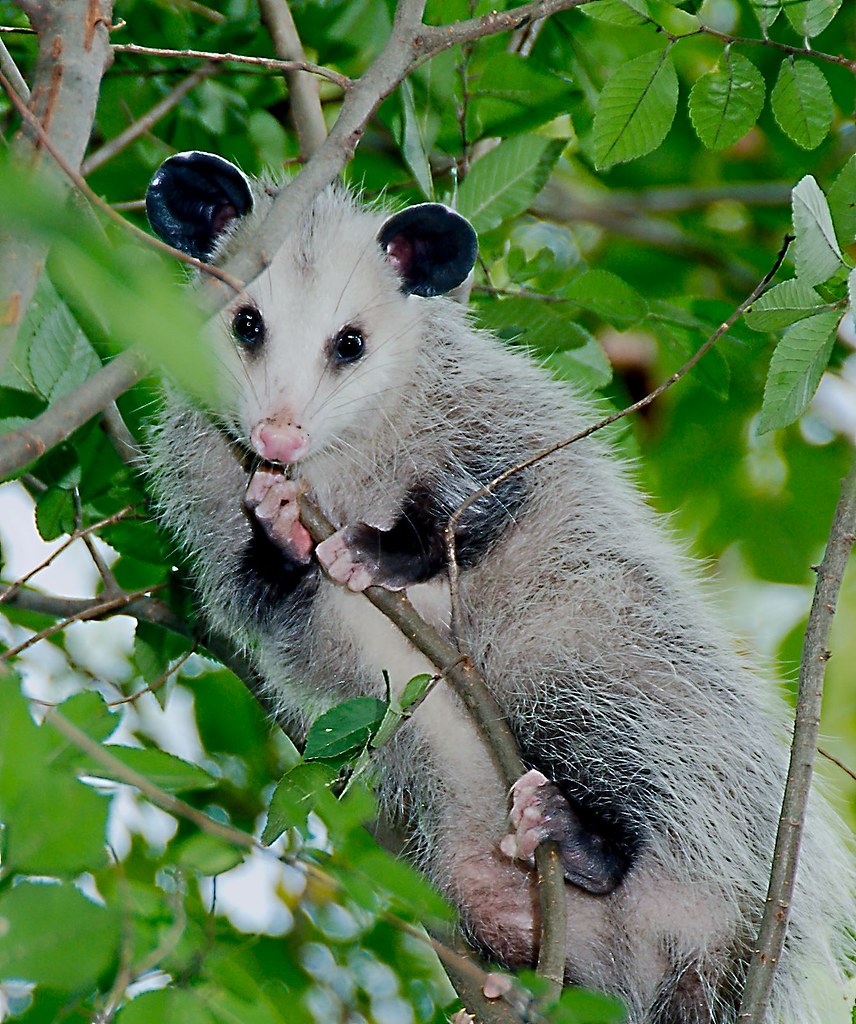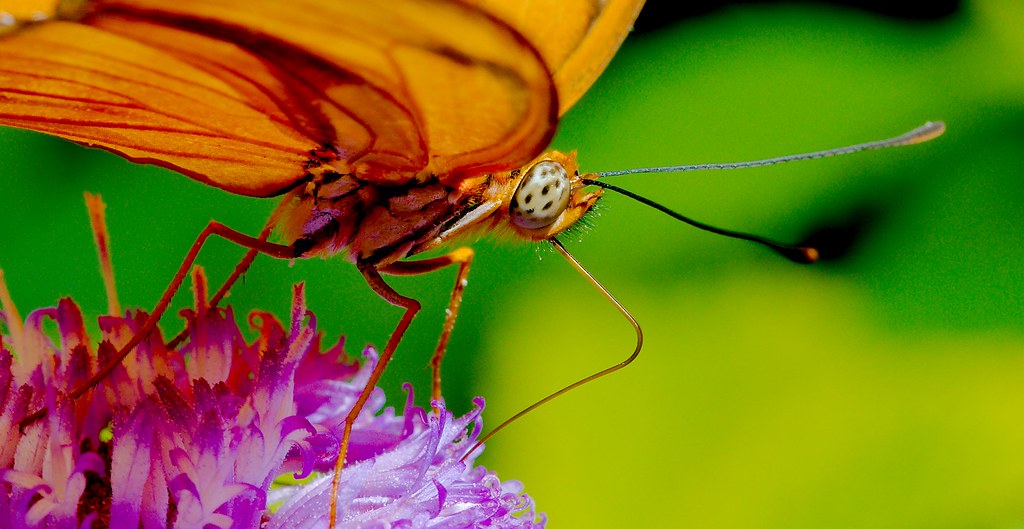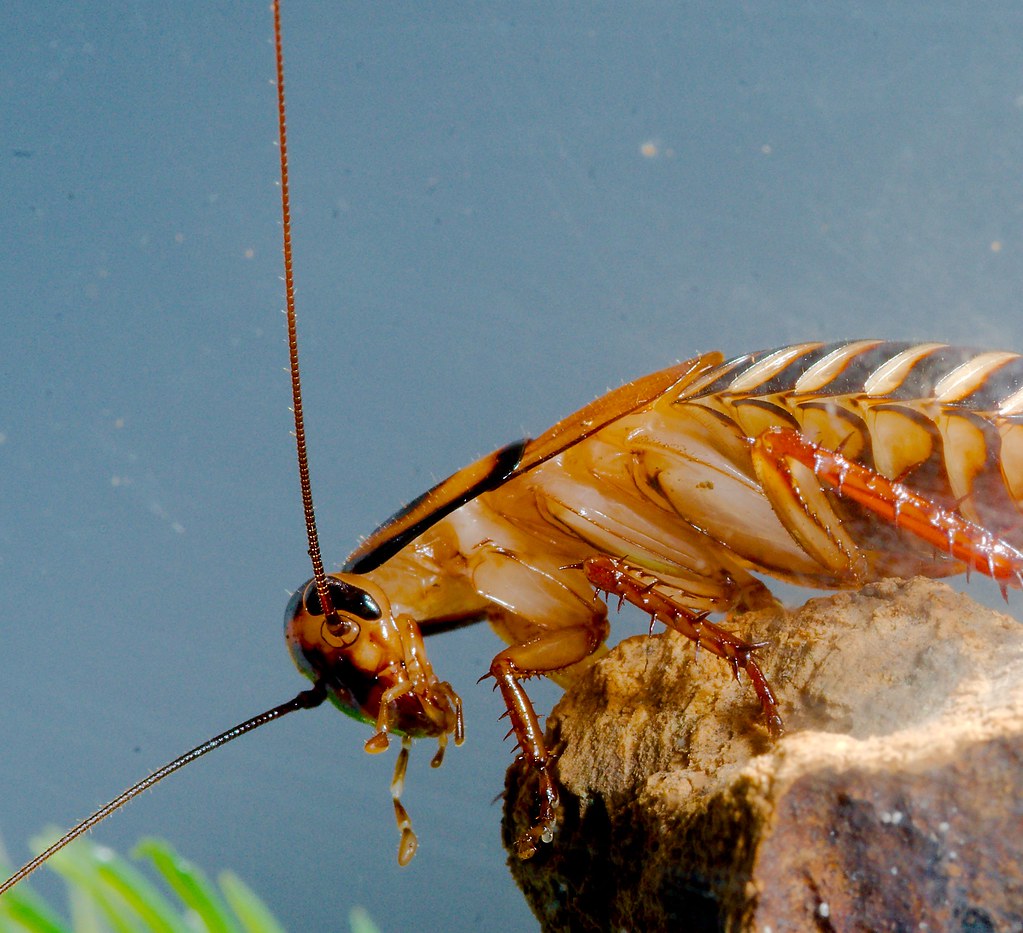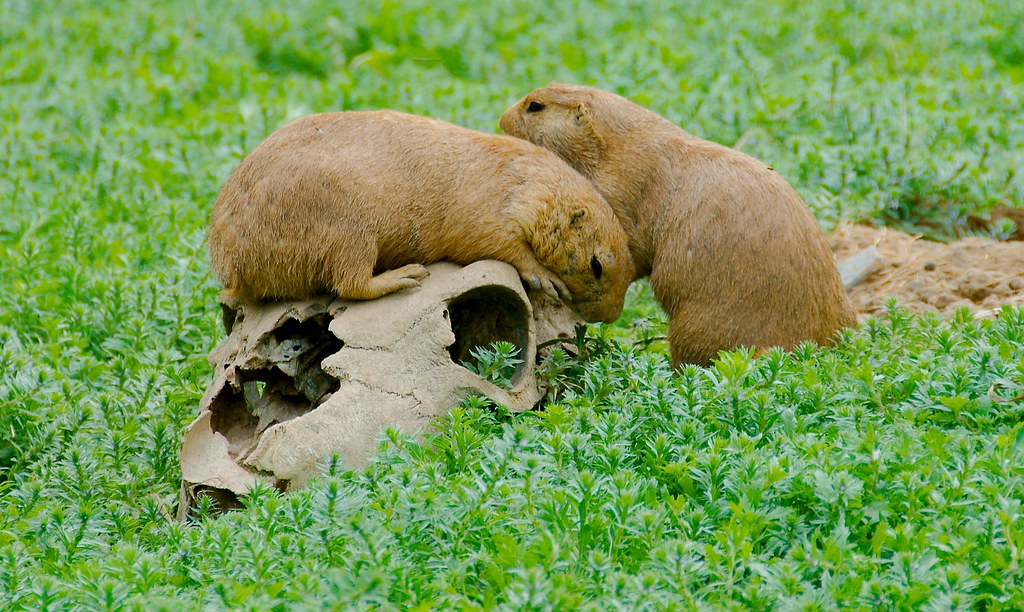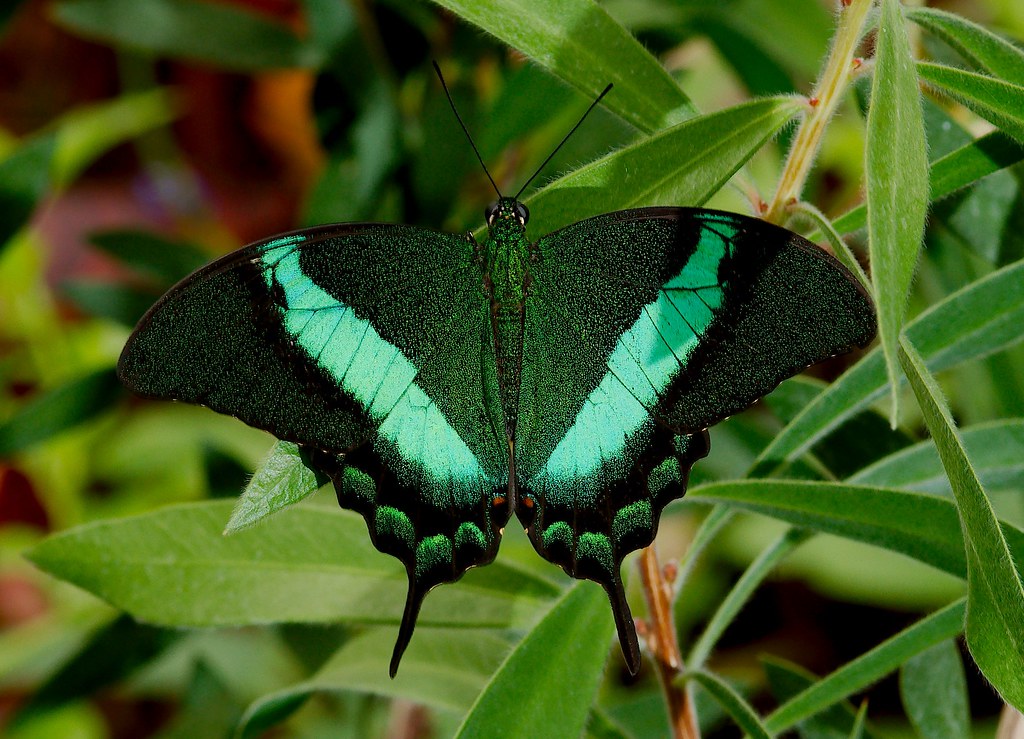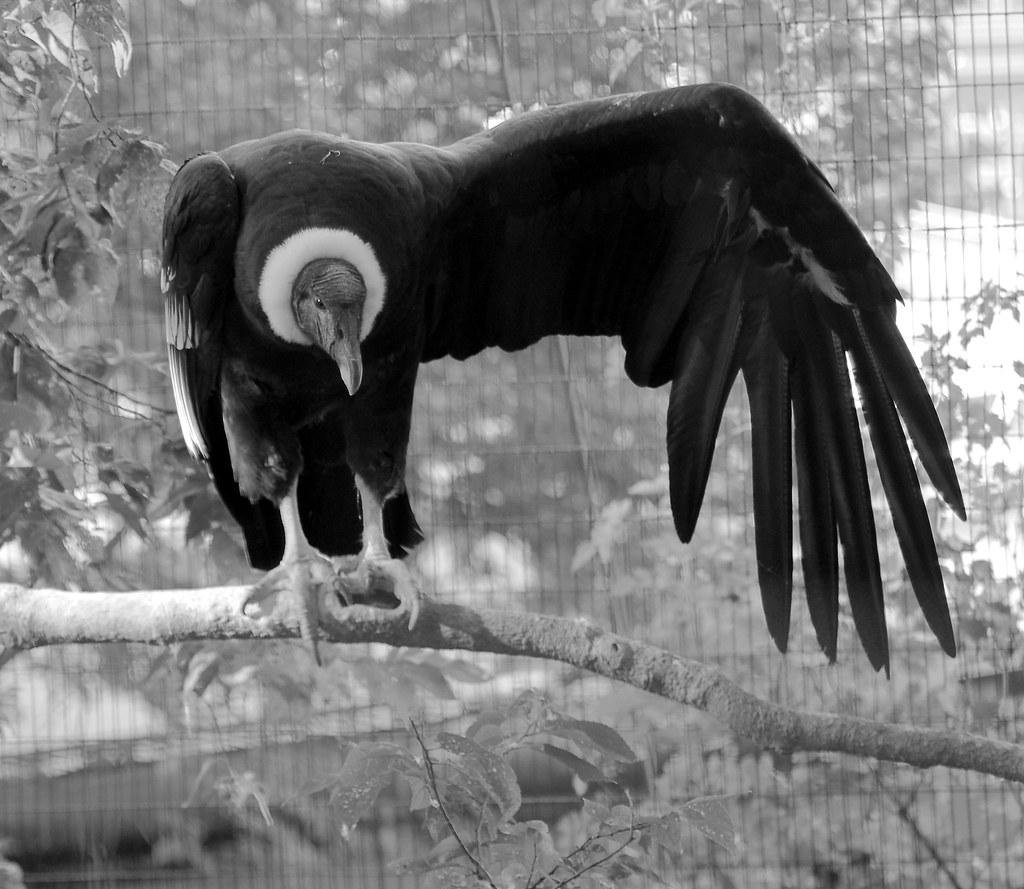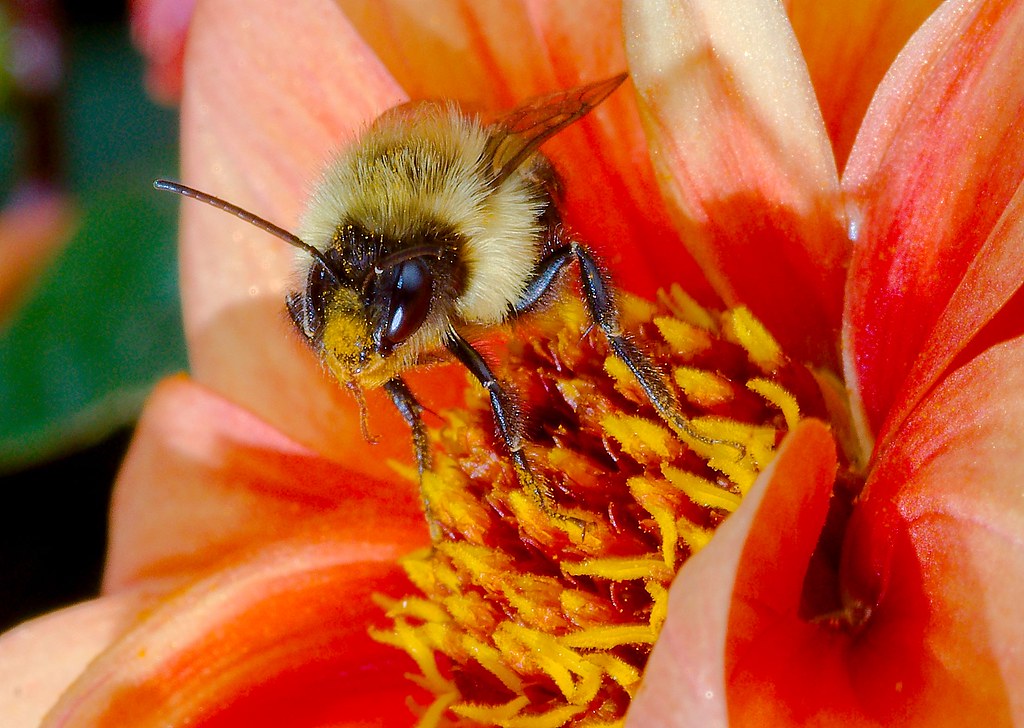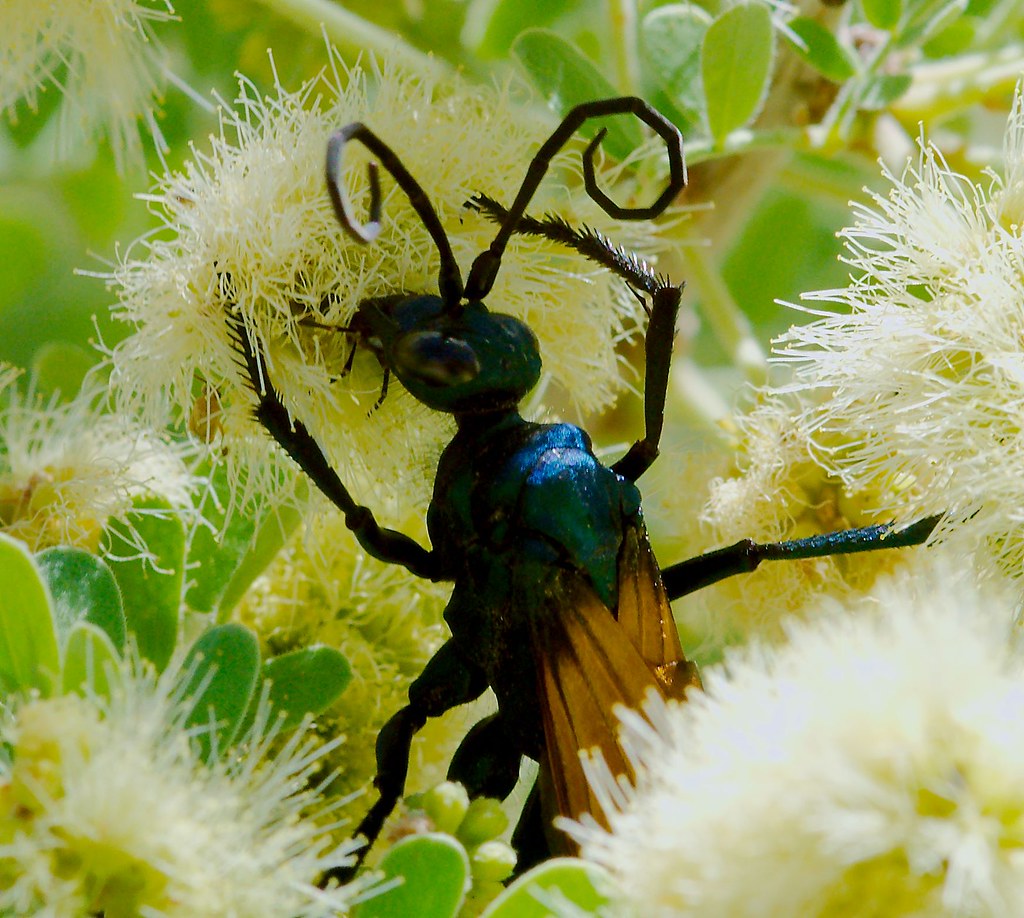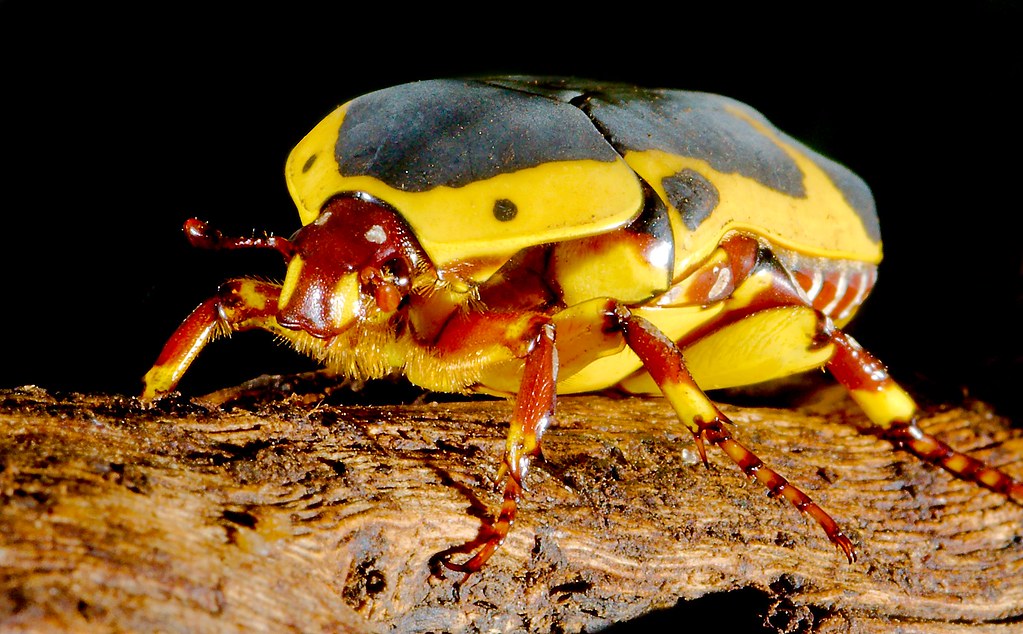
Actually, the beetle is so-named because cowardice runs rampant throughout the species.
Cactus Mouse (Peromyscus eremicus)
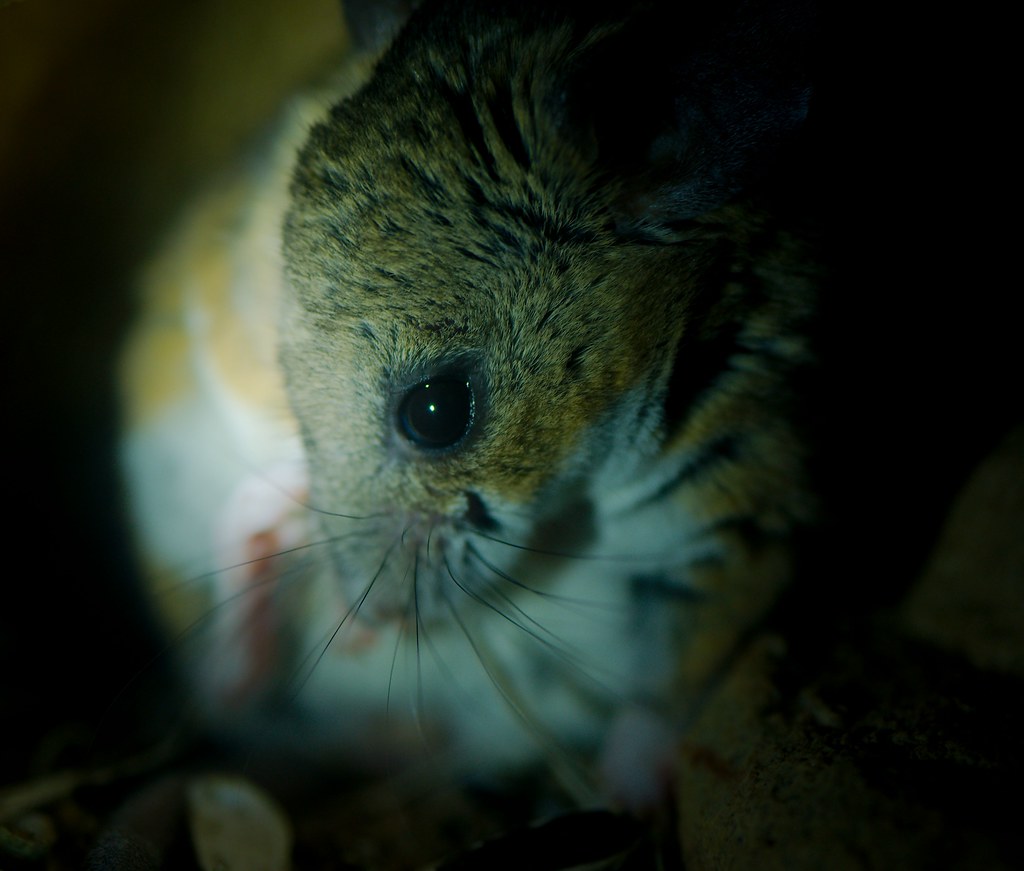
This is not a great photo, for which I apologize. It is, however, illustrative of a common difficulty I face when doing my photos. This mouse is nocturnal. While fairly abundant (most rodents are doing OK), unless you like to go out in the desert and either trap them or destroy cactus to get to them, you’ll never see one. I did see some desert rats, but they move much too fast in very low light to get a photo. So this is the best you can get.
Nocturnal exhibits are tricky. I generally try to avoid flash except at the very lowest power (and for highly sensitive animals, no flash at all). However, it’s often too dark to even focus. So, to get a shot, you have two choices. You can either go for a narrow aperture to maximize your depth of field (how much of the animal is in focus) and really blast it with light, or you can open the lens up, which makes the focus plane very narrow and go with little light. Blasting an animal with light is potentially cruel to the animal (depending on how their eyes or eye-like features are constructed), can stun it into non-normal behavior (making the photo less interesting) and, in zoos, cause a lot of glass bounce. If you take the other approach, focus can be hard, as you’re not working with much light either to begin or end.
In this case, I used a flashlight technique. I used a flashlight on low power, in a glancing orientation so it didn’t hit the mouse’s eyes, to set the focus on the camera (on a tripod). Then, I set the camera to take several photos in rapid succession, and just swept the flashlight beam across the mouse fairly quickly. Then, it’s just a matter of choosing the best image.
It may not be the world’s best photo of a mouse, or even of a cactus mouse. I don’t think it stands on its own (hence this long-winded explanation). However, I think it captures the intimacy of the burrow without hurting the mouse, which was the core goal.
Glasswing
Another view of the glasswing from yesterday. Notice all the little hairs (probably not the right name) on the wings. You can see them on other butterflies if you look. On these though, since there are no scales, it’s a lot easier to see how the wing is constructed.
You can also see how, since they live much more placid lives than the other butterflies, they must play sports to keep things interesting and to demonstrate their fitness to mate. This one is playing the role of the hoop for Ōllamaliztli.
Water Strider (Gerris marginatus)
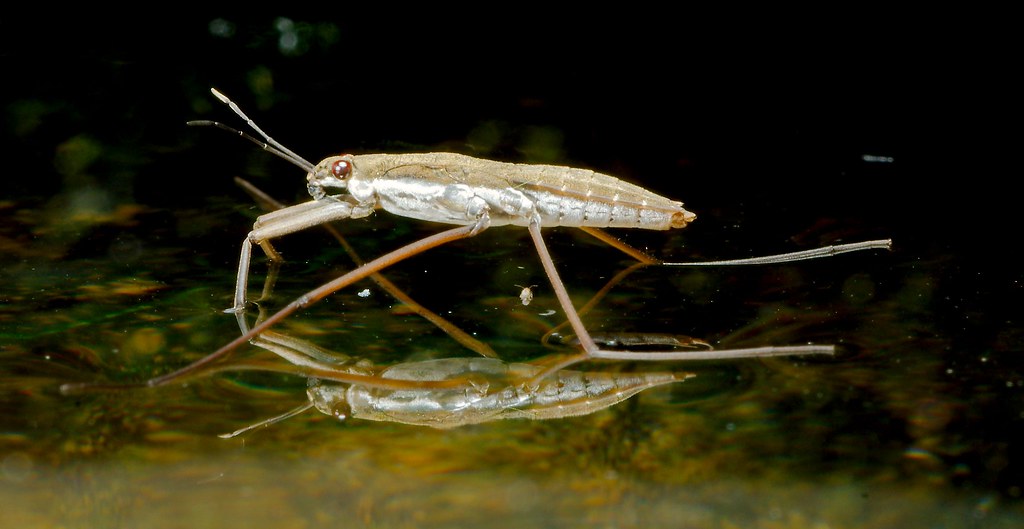
Waterstriders are gentle but highly protective. There are large, a whopping 12.7 millimeters long and are designed to float across the top of the water due to their long legs.
When waterstriders enter battle, they have an appendage-like stinger that comes out of their mouth. This stinger is well adapted to combat their mortal enemies, The Garthim. Once stung, they use their long legs to push The Garthim over so they sink beneath the waves and drown.
They are used as mounts throughout the world of Thra.
Glasswing Butterfly

There are animals that you read about, but never really expect to see. Some of them are rare. Some are extinct. Some are just mythical. Others though, are just really really hard to see.
This is a glasswing butterfly. They were on my list of things to see when I went to central America. While I was able to see several blue morphos (another classic butterfly of the area), I was constantly foiled in my attempts to see the glasswing. Since then, every butterfly garden I visited, I’d ask if they had glasswings. The National Zoo claimed to have them, but I never found them.
Then, in Phoenix, I visited the Butterfly Wonderland. I had called first and asked if they had glasswings. Upon receiving an affirmative, I set aside an afternoon and went a-photographing. Upon getting there, I saw many different butterflies and moths (why isn’t it “mothes”, by the way). What I did not see, however, was the glasswing.
The issue, of course, was that I knew they existed and I knew one was around, but having never seen one, I didn’t know what to look for. I knew that they were butterflies who lacked scales on their wings and, therefore, had clear wings like most insects do. What I didn’t know was how hard it would be to find an animal the size of a dime in a 10,000 square foot (929 square meters for those of you who use a real measuring system). Moreover, I didn’t know hard it would be if the animal were effectively invisible.
This, really, is the difference between intellectual learning and experience. My intellect told me: “You know they’re here, you sorta know what they look like. Just be patient and you’ll see one eventually.”.
Now that I’ve done it, experience would say:
“These butterflies are small. Really smaller. Much smaller than any of the other butterflies you see. They’re also clear. This means that, unlike the other butterflies who have traded survival opportunities for increased chances of mating, these ones have nothing to gain by being out in the open and if they’re too high up, they run the risk of being blown away. So look for them low to the ground, under other plants. Scan the area with your eyes and remember where the bright, obvious butterflies are. Then look for movement with your peripheral vision. They don’t move much, so be patient and look around each area for at least five minutes before moving on.”
The first time I looked for them when I knew they were there, I spent three hours. Once I lost it and had to re-find it, I had learned enough that it only took me ten minutes.
That is why experience matters.
Butterfly
Virginia Opossum (Didelphis virginiana)
It was senior day at the zoo, by which I mean, the seniors from the local high school were forced to go to the zoo for their Biology class. As I was taking this photo, three young men walked up. Two of them were white, one was African American. They were all dressed in what suburban people call “urban”, but what I am led to believe that urban people call “clothes”. Their pants were loose, they had over-sized sneakers, and everything was fairly worn. They didn’t seem to want to be there.
One of them saw this critter in the tree and looked at the sign. He pointed, and said to his friends “That ain’t a red panda.” Another said “No, it ain’t.” Then the African American guy looked at it and at his friends and said “I believe that is an opossum.”
Then, as his friends stared at him, he said. “Well excuse me for speaking English!” Then they laughed and walked away together.
And that is why you shouldn’t pre-judge people.
Saharan Horned Viper (Cerastes cerastes)
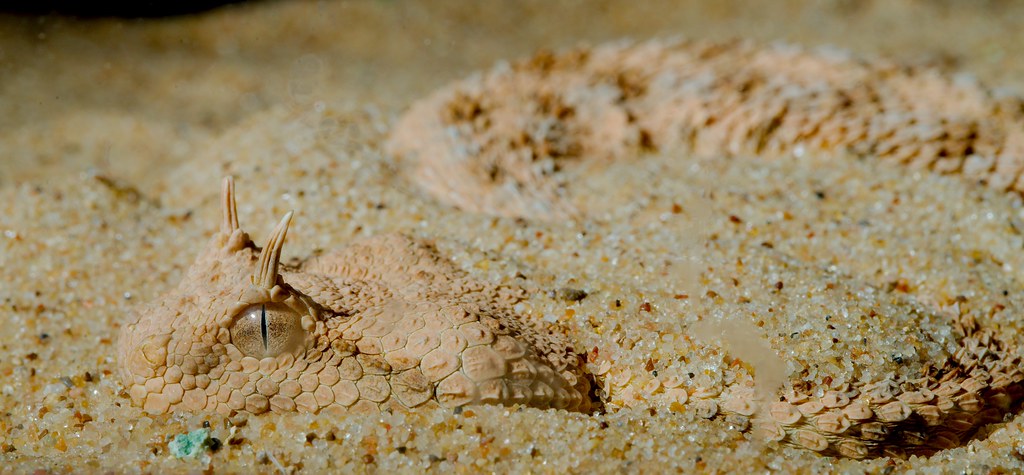
Wikipedia states “In the wild they are typically ambush predators, lying submerged in sand adjacent to rocks or under vegetation. When approached, they strike very rapidly, holding on to the captured prey (small birds and rodents) until the venom takes effect.” I’m going to go out on a limb and say that it’s probably a fairly effective strategy.
Butterfly Tongue
Zebra Bug (Eurycotis dicipiens)
Prairie Dog performing Hamlet
Aardwolf (Proteles cristatus)
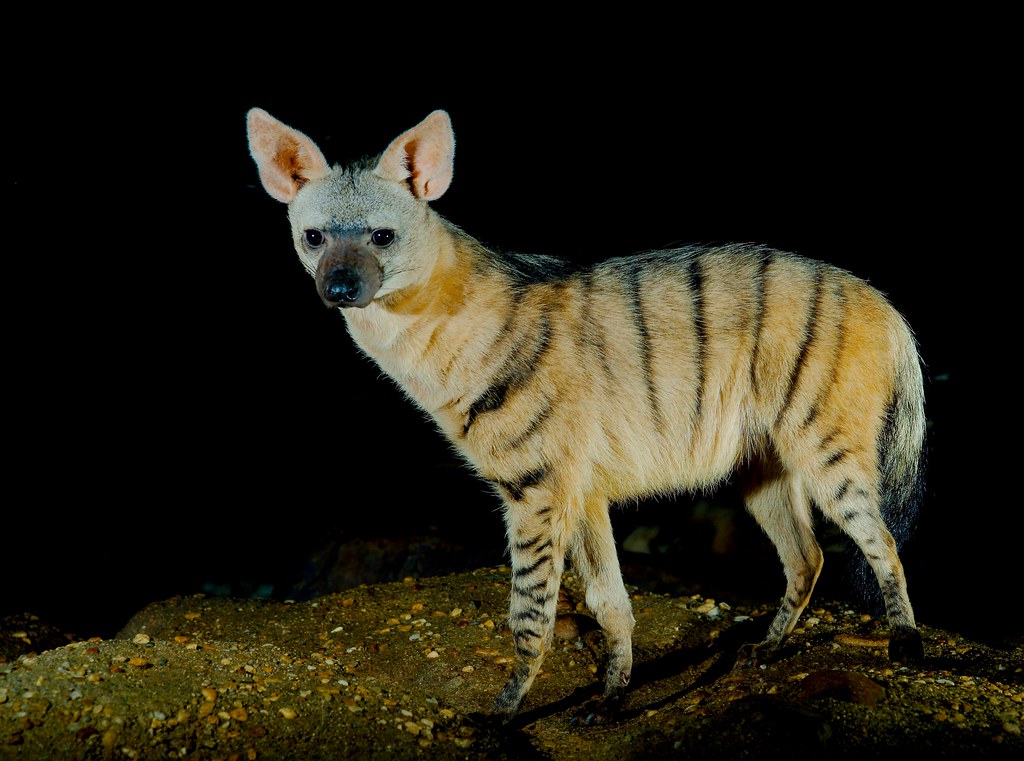
It’s time for another game of … Really? Are you sure?
To play this game, take a close look at this photo. Look at the large ears, well suited to listening. Look at the thin legs and paws, that could be used to make rapid turns while running quickly. Look at the stripes, often seen in stalk-and-ambush predators.
Give yourself at least 30 seconds to look at the photo.
Now ask yourself … “What does the aardwolf eat?”
Now Google it.
Thank you for playing this installment of Really? Are you sure?
Hope to see you next time.
Giant Asian Mantid (Hierodula membranacea)
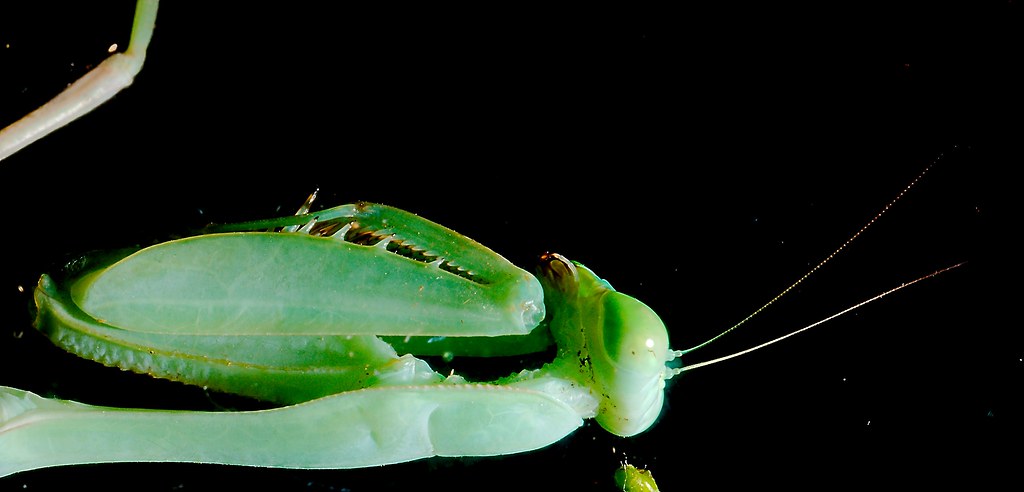
Look at the spines on the arms. If they weren’t there, the mantis would need a much stronger grasp to hold onto the prey. This would require more energy, which would require more prey, so evolving the spines is an energy-saving mechanism. Evolution, like Economics, is basically Thermodynamics applied to a more narrow field.
Swallowtail Butterfly
Andean Condor (Vultur gryphus)
Fennec Fox (Vulpes zerda)
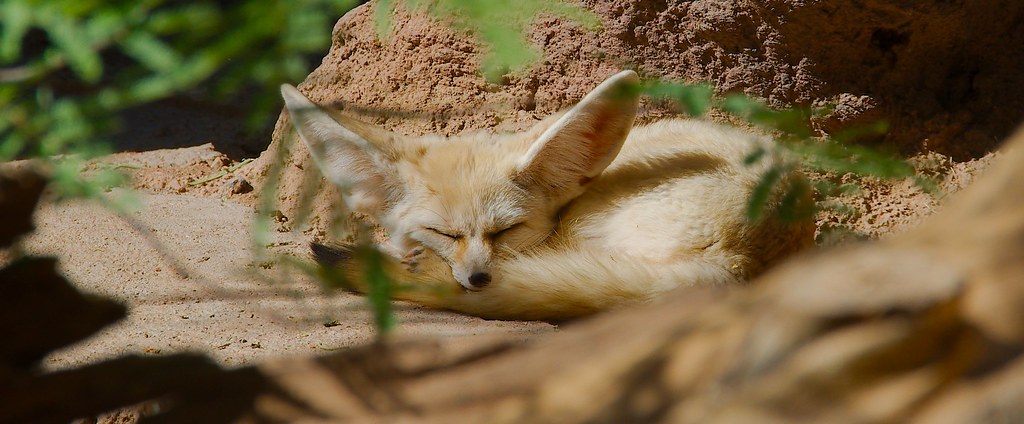
The Fennec Fox is a difficult animal to photograph. They’re rarely on exhibit and, when they are, they like to sleep in a burrow or, in a heap in the back of their enclosure. I’ve taken many a photo of a big ball-o-fox and they always just turn out a bit fuzzy. For this shot, several things had to happen. First of all, I had to be a member of the Phoenix Zoo, because members get in an hour early. This means it’s an hour before kids arrive and bang on the glass, which sends the foxes underground. (If you have kids, don’t let them bang on the glass. If you are a kid, don’t bang on the glass. It’s not fun for anyone.)
Then, the light had to be just right. A fox that’s in shadow isn’t going to come out as nicely and one that’s half in/half out isn’t going to come out at all. Finally, you have to not have any obstacles in the way. This is particularly hard at zoos, because your positioning is often quite limited. To get this shot, I had to use my tripod to position the camera at the very bottom of the glass, focus through a bunch of branches and take the picture. After getting there, and getting this shot, the fox got up and walked away. I had about three minutes to work with, and had I not visited the zoo previously, would never have known the constraints ahead of time and couldn’t have made it.
It was a lot of work, but I think the ears make it worth it. Such awesome ears.
Atlas moth (Attacus atlas)
Bee
Throwback Thursday!
Travel
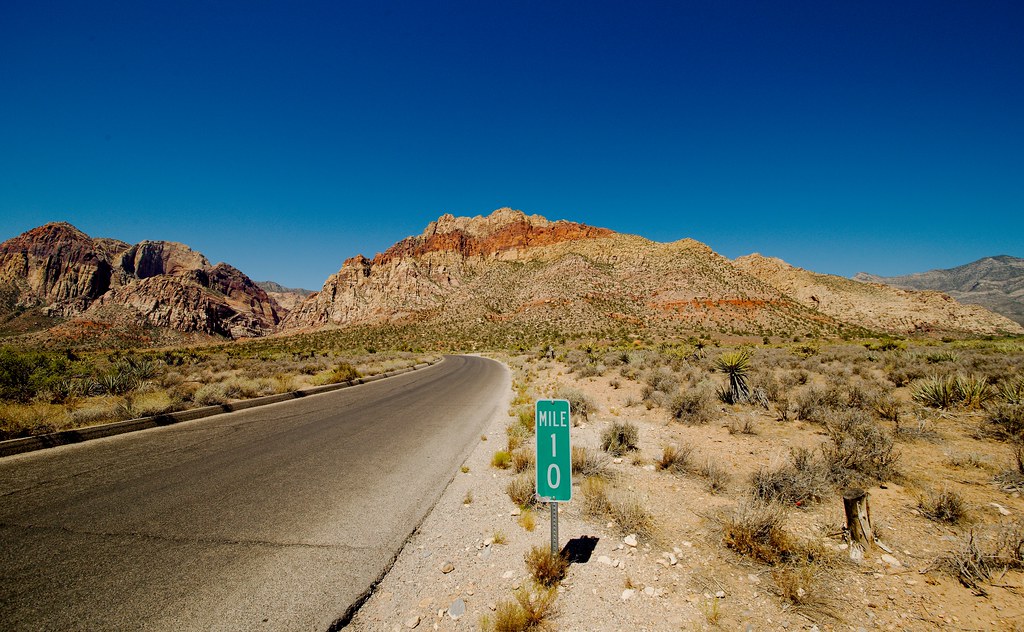
I never used to like to travel. Far away places were hard to get to, annoying once you got there, and didn’t have any cats. Moreover, you could only the books you brought with you or, if you bought more books, you’d then have to schlep them back home.
Years later, as my allergies got under control and I began to realize that when you traveled, you didn’t have to visit buildings about dead people (sorry Mom, I still don’t care as much about history as you do.) So I started visiting zoos and parks. It really started about ten years when I had to travel for work and found myself bored in a new city after work stopped but before it was time to go to bed. Then, inspiration struck as I was looking at online maps for nearby things to do and I saw a bit of green listed “preserve”. I visited and it was a completely different experience.
Since then, when I travel for work, I try to use the time between 5pm (when work usually ends) and about 8pm (when parks usually close) to get a feel for the land. I go walking around, see what there is to see and take photos until the sun either goes down or I get too hungry to wait. Some parks are amazing, some, well, not so much.
If you’re in Las Vegas, and don’t care much about gambling or entertainment, it can get somewhat unpleasant. There are three areas I’ve found that make up for that. There’s the Valley of Fire State Park, the bird viewing area in the water treatment facility in Henderson (really), and here, Red Rock Canyon.
Red Rock Canyon is, at its simplest, a loop drive in an area of the desert that has lots of interesting rock formations and great slopes that you can lose your balance on, sliding down 20 feet and dislocating both your knees. On this particular trip (unlike the one previous), I avoided the latter. This is partly because I am older and wiser, but mostly (I’m afraid) because it’s a lot hotter in the desert in May than it is in March and I left when the sun got too high.
This visit consisted of one moderate hike (three hours) and a drive around the loop to stop and take pictures with my new wide angle lens. This particular photo was at mile ten of the loop drive (go on, guess how I know that). What I like about it is how clear the sky is and how the lens picked up the difference in light scattering. If I had had a polarizer, this difference would be even more stark. I also like how you can see the two mountains that have been thrust up from the earth, but seemingly from the sides, as the strata pull together in the middle.
Geology has always been interesting in the abstract. When I’m out in the desert, I don’t often notice stuff like that, but once I get back and am processing the photos, things that I never noticed suddenly become obvious. The desert is full of color. It’s just not where you normally look for it. The sky, the rock, the dirt … all beautiful. All missed, though, if you’re just looking for trees and birds.
